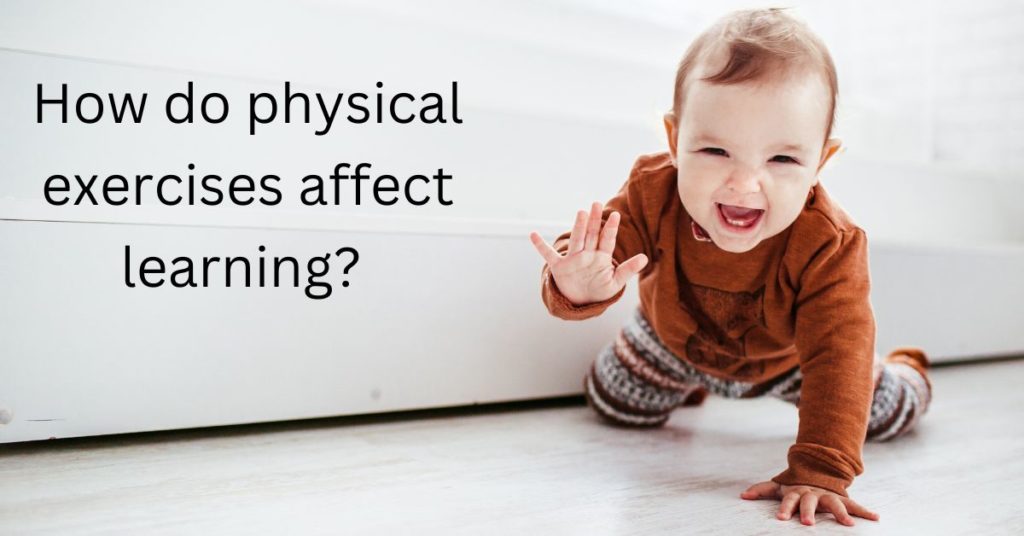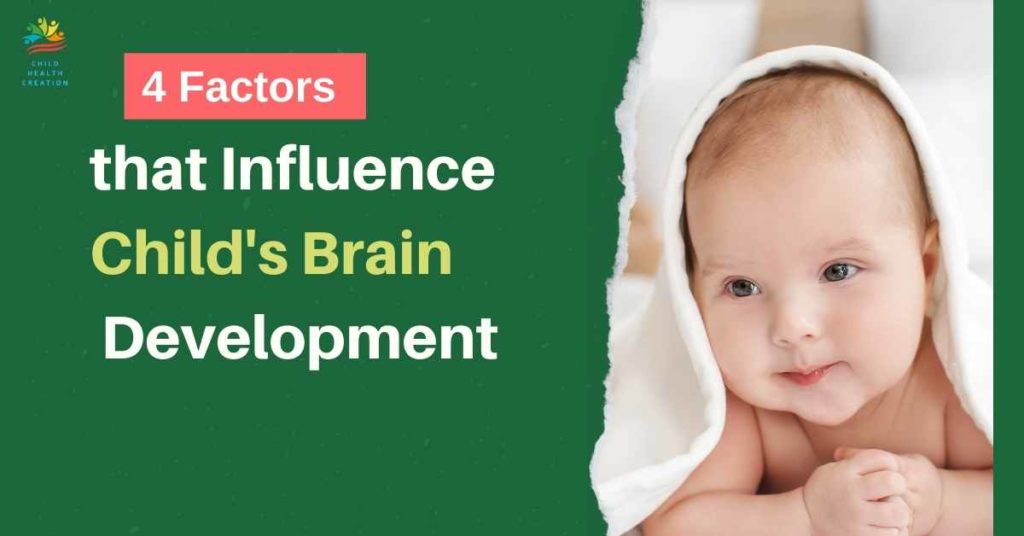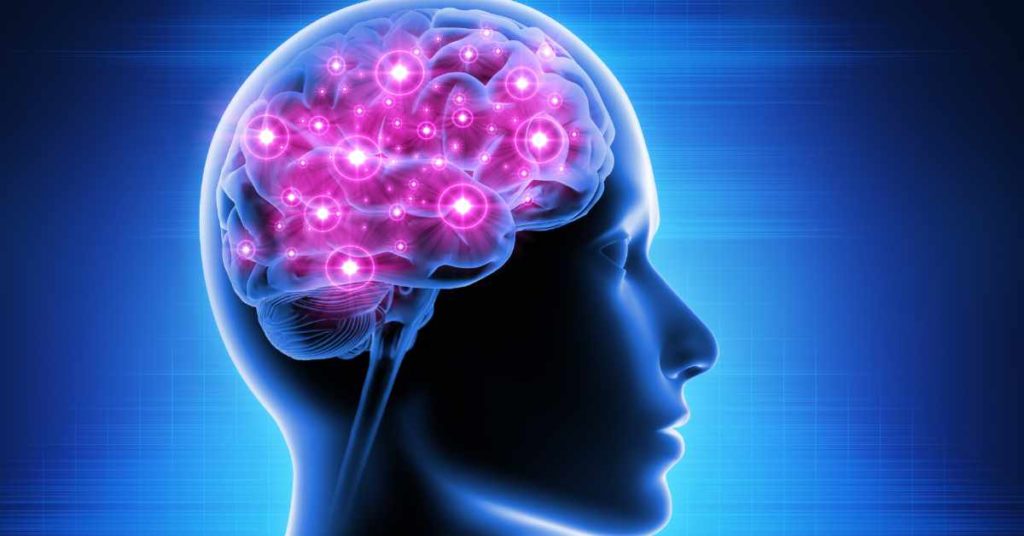Introduction
Nowadays, the topic “How important is physical exercises for brain performance and learning?” is very up-to-date. The positive effects of physical activity on health and quality of life have been known for centuries. For example, the ancient philosopher Plato said: “A lack of activity impairs the good condition of every man, while exercise and methodical movements protect and preserve it.”
We also know a Latin idiom from the Roman Poet Juvenalis: “Mens Sana in corpore Sano.” Physical exercise is necessary for mental and psychological well-being (written in Wikipedia). Current Guidelines from the World Health Organization (WHO) encourage everyone to engage in regular physical activity to ensure proper physical development and to maintain physical and mental health.
Why is it so important for our physical and mental health, including cognitive brain function and learning process, to get enough proper, daily physical activity? What kind of movements, how long, and how often do you have to move to be healthy and stay healthy?
In this article, I am going to explain the following questions:
- What is the situation today with physical exercises worldwide?
- How is the digital transformation affecting young people’s lives?
- What does sufficient, complete physical activity mean, what is the purpose of movement and what role does exercise play in our lives?
- How does the brain work when learning?
- Cognitive functions of the brain.
- Hippocampus and Connective Tissue: is there a relationship?
- How does movement affect learning?
- How are movement and brain skills related?
- Finally, I will give you my opinion on this subject because, as a pediatrician and researcher with many years of experience in children and adolescent healthcare, I deal a lot with sick and healthy children to disclose reasons for many diseases.
Physical Activity Situation Today
The World Health Organization (WHO) shows that just one hour of exercise a day could prevent disease. Only 1/5 (20%) of young people worldwide can do this. These are the alarming results: lack of physical exercises among children and young people worldwide. Cross-National Study HBSC, “Health behavior in school-aged children,” conducted in 50 countries worldwide initiated in 1982 to understand the health status of children and adolescents. This study shows that more pupils feel stressed from school, more and more pupils who are overweight and exercise, less and more pupils report having psychosomatic health complaints.

On the one hand, there is a lack of exercise, especially among students; on the other hand – mental stress due to digitalization and a lot of information and technologies requires fast brain function to select, process, and remember many details. Digitalization is using digital technologies to change a business model and provide new revenue and value-producing opportunities; it is moving to a digital world. How is life in the digital world? It shows that the impacts can be positive, as digital technologies push the frontiers of information availability and increase human productivity.
Still, they can also pose risks to people’s well-being, ranging from cyberbullying to the emergence of disinformation or cyber hacking. Nowadays, our research society pays attention to youth and digitalization, focusing on life chances and inequalities in the digital society. It also provides recommendations to improve future measurements of the impact of digital transformation on different areas of well-being.
According to a study in which 1.6 million students between the ages of 11 and 17 were surveyed in 146 countries, the proportion of inactive children is highest in South Korea and also among German youth – around 80 percent of boys and even 88 percent of girls are not physically active enough. Digitalization leads to a lack of exercise and more people playing while sitting. The WHO is skeptical that the situation will change noticeably by 2030.
In addition to smoking, an unhealthy diet, and alcohol abuse, a lack of exercise is a general risk factor for many diseases, such as Arterial Hypertension, Obesity, Atherosclerosis, Diabetes, and cardiovascular disease, that can be influenced.
The focus of the WHO is the prevention and treatment of heart disease, cancer, respiratory diseases, and diabetes, which are the leading causes of premature death in Europe and worldwide.
Effects of exercise on the body
What is essential for complete sufficient movements?
- muscle creating,
- stretching of ligaments, tendons, and fascia,
- geometry (physiological direction) of movements following specific parts of the body,
- focusing on breathing.
Goals of physical exercise:
- Build good bodies (a good, comfortable house for our minds, our CNS – central nervous system – brain and spinal cord, and placement for internal organs). They always work together.
- Promote normal function of our organ systems (blood circulatory system, breathing, hormonal system, metabolism in all tissues).
- Promote cognitive functions of the brain, as well as spread and deepen.

What does “complete sufficient movement” mean? – It means the current state of physical performance in strength, endurance, speed, mobility, and coordination.
A good example is a fitness – an excellent physical condition due to regular training (research study “Aging, Fitness and Cognitive Health” by Prof. Monica Fabiani, Department of Psychology, University of Illinois, 2013). She discovered the positive influences of fitness on cognitive health.
What role does physical activity play in our lives?
- Creation of a straight spine, and correct posture makes our body mobile and flexible: this should be carried out with the help of doctors, teachers, and parents as a duty from birth in children – to build a healthy musculoskeletal system. It ensures that the body stays in a fixed shape. I advise you to include in daily life swimming, Pilate, gymnastics, and tennis.
Notice!: Not all sports are healthy. There are also disadvantages: horse riding – trigger stone and strain on the spine: jogging – Stress on the knee joints and ankles, and others.
- Prevention of diseases: prevention of 80% of diseases
The essential systems such as bones, muscles, circulatory, digestive and endocrine systems only develop and function properly when they are stimulated by frequent physical activity. Movement stimulates metabolism in all organs and tissues and reduces blockage in blood vessels (thrombosis, atherothrombosis). Prevention of overweight and obesity.
- Development and Enhancement of Brain Functions: Researchers say exercise and brain performance are related. Sport strengthens the memory!
Functions of the brain
Do you know that the average adult human brain weighs about 1400 g (1,245 to 1,375)?
The baby’s brain at birth weighs only around 400 grams. By two years, it has doubled (800 g) grams. Doubled in childhood, but only by processes. A human being has about 100 milliard brain cells that are interconnected. The number of these links is estimated at 100 billion.
- The researchers say that exercise and brain performance are related. Sport strengthens the memory!
What are the tasks of the brain: the brain is responsible for controlling and coordinating almost all bodily functions and movements, as well as for processes within the brain, such as receiving, processing, and storing information, for thought processes and emotions, and language production.
One of the most crucial brain functions is the ability to learn.
Memory is a significant part of learning: short, long and another (it will be described in the next article)
Important! But the number of nerve cells hardly changes over the course of life. Regenerating nerve cells exist in one structure – the Hippocampus. Stem cells grow there, constantly forming new nerve cells.
Research information about neurogenesis
Generation of new neurons from neural stem cells has been shown to occur in the dentate gyrus, the hippocampus, a brain region involved in learning and memory [Barnes J, Bartlett JW, et al. 2009]. There is ample consensus that neurogenesis contributes significantly to synaptic plasticity and cognitive function.
Decreased numbers of neural stem cells in the dentate gyrus result in impairments in learning and memory. Factors are known to increase stem cell numbers and neurogenesis, such as exercise and environmental enrichment, resulting in improved learning and memory [van Praag H, Christie BR, Sejnowski TJ, Gage FH. Running enhances neurogenesis, knowledge, and long-term potentiation in mice. 1999]. It could be assumed that impaired neurogenesis contributes to Alzheimer’s disease pathology-driven neuronal dysfunction.
Learn process: a Network of nerve cells
What is going on in the brain when learning: we need a high concentration level; we receive the information, then process it and store it in the memory areas. The cortex cerebri (the cerebral cortex) and hippocampus are primarily responsible for learning processes.
Our cerebral cortex comprises billions of neurons that make up gray matter.
A neuron consists of a cell body with a nucleus. There are many extensions from the body, the so-called short dendrites; through these dendrites, the cells receive impulses (electrical information) from other neurons with which they are connected. And the nerve cells have a longer extension, the so-called axon; through this axon, the neuron can transmit impulses to neighboring cells.
A single axon can be so branched that the neuron can communicate with up to 100,000 other nerve cells. The connections between processes are called synapses.
Signals are transmitted at synapses through messenger substances (neurotransmitters): Dopamine, Epinephrine, Norepinephrine, and Serotonin – happiness hormone.
Then other axons or dendrites of other nerve cells take over these messenger substances and transfer them back into electrical impulses.
This is how the network of nerve cells in the brain works. And so the information is transferred from one part of the cortex to another.
The stronger the network, the faster information is transferred to the brain.
How does Physical Exercise enhance the Brain’s Ability to Learn?
- Physical exercise increases blood flow to the brain (the blood supply), oxygen and glucose consumption, improves neuron metabolism, and thus leads to new formation and networking of nerve cells.
About 800 milliliters of blood flow through the brain every minute. The blood supply to the brain accounts for between 15 and 20 percent of the cardiac output. The blood supply to the brain is provided by the right and left internal carotid arteries (internal carotid arteries) and by the vertebral artery, which comes from the vertebral bodies and enters the cranial cavity through the occipital foramen.
- Physical exercise leads to new formation and networking of nerve cells and the formation of new processes (dendrites, axons).
- Physical exercise increases the production of messenger substances: Another positive effect of exercise on memory performance, learning ability, and emotional processes is the increase in the concentration (release) of various neurotransmitters in the brain: serotonin (happiness hormone), dopamine (reward hormone), and noradrenaline (stress hormone). Billions of nerve cells in the brain communicate with each other using various neurotransmitters, which pass signals from one nerve cell to the next and control all thoughts and actions.
- Physical exercise contributes enlargement of the hippocampus, which is responsible for long-term memory and emotions.
Learning is Fitness for the brain
The learning process means that new connections are created between nerve cells – or existing bonds are strengthened.

Just two years after birth, the brain is about twice as heavy – although the number of nerve cells hardly changes over our lives. Our brain becomes more prosperous because of the switching points, and the connections become thicker.
- Every learning process is equivalent to a gym visit: just as the biceps get stronger through training, regular exercise strengthens our brain. The result: our brain power increases, and our memory improves. This effect can last a few seconds, a few minutes – or even a lifetime.
- Brain research has made tremendous strides in the last two decades. One of the new findings is that physical activity promotes brain development processes and, thus, the learning performance and emotional development of children, adolescents, and young adults. This positive effect of exercise on cognitive performance can be proven old.
The human brain has an extraordinary ability to adapt, known in neuroscience as neuroplasticity.
Experiments with animals have shown that physical exertion leads to increased blood flow to the brain, leading to the formation and networking of nerve cells. This knowledge can be transferred to humans.
- So we could say that exercise promotes brain processes by affecting the structure and functioning of the brain. Movement in the broadest sense trains not only the body but also the brain’s adaptability and thus, plasticity. We shouldn’t be surprised that neurons that are “bored to death” over time die.
Neurotransmitters and physical activity
Another positive effect of exercise on memory performance, learning ability, and emotional processes is the increased concentration of various neurotransmitters in the brain. Billions of nerve cells in the brain communicate with each other using multiple neurotransmitters, which pass on signals from one nerve cell to the next, and in this way, all thoughts and control actions.
Numerous animal experiments have shown that physical activity significantly increases the release of the neurotransmitters (messenger substances), serotonin (happiness hormone), dopamine (reward hormone), and noradrenaline (stress hormone).
Thus, the brain processes dependent on the transmitters are positively influenced. These study results can also be transferred to humans. The positive effects of physical activity on various neurobiological processes in the brain make it clear how important regular exercise is for emotional processes, memory, and learning performance.
Learning is considered a fitness exercise (muscle training) for brain development.
Brain research in recent years
- Stefan Schneider from Cologne Sports University. His message: “Sport is not only good for the body but also the psyche.” A new finding is that physical activity promotes brain development processes and, thus, the learning performance and emotional development of children, adolescents, and young adults.
- Neuroscientist Antonio Damassio has shown how important emotions are for human development. Hippocampus – long-term memory and emotions. It depends on how much and often get serotonin during exercise and learning; then, the hippocampus decides whether to store this learned knowledge for a long time or not.
SUMMARY
- The positive effects of physical activity on various neurobiological processes in the brain show how vital regular exercise is for learning performance, emotional processes, and memory.
- Exercise trains the body and the plasticity of the brain (brain performance).
- Every learning process is the same as going to the gym: just like training a bicep makes your biceps stronger, regular practice strengthens your brain. The result: our brain power increases, and our memory improves.
- It is essential to keep a balance between physical and learning fitness. The type and intensity of movement required for this depend on individual factors: (age, especially for children, state of health, etc.).
- Learning and exercising in inappropriate amounts for an individual can also be detrimental to health. Everything must be unique: for each age group, especially for children
Finally:
My opinion on this subject: 80% of diseases are caused by lack of exercise, only 10% by unhealthy diet and the rest 10% by genetic disorders. That is why the influence of physical activity is significant for keeping on a healthy path.
I will give you some scientific proof of why physical movements play a significant role in cognitive ability:
- Regenerating nerve cells exist in one structure of the brain – the Hippocampus. Stem cells grow there, constantly forming new nerve cells. Decreased numbers of neural stem cells in the Hippocampus result in impairments in learning and memory. The factor known to increase stem cell numbers and neurogenesis, such as physical exercise, results in improved learning and memory.
- Ubiquitous Connective Tissue (CT), which participates in all types of movement, impacts the stem cells: stem cell differentiation is determined by the microenvironment created by CT cells [Petrov R. Immunology. – M.: Medicine, 1987]. In this regard, we can assume a significant influence of the structure and metabolism of connective tissue on the functioning of neurogenesis.
Physical activity promotes brain development processes and, thus, learning performance and emotional development through neurogenesis in the hippocampus and its interaction with connective tissue. The more we do Physical exercise, the better microenvironment created by CT cells, and as a result, the better stimulation of the stem cells in the Hippocampus.
Kew words: learning, cognitive function, movement, exercises, hippocampus, neuron, axon, dendrite, neurogenesis, fitness for the brain, neurotransmitter, nerve cells network, connective tissue.
If you liked this article, please leave your comment below!





